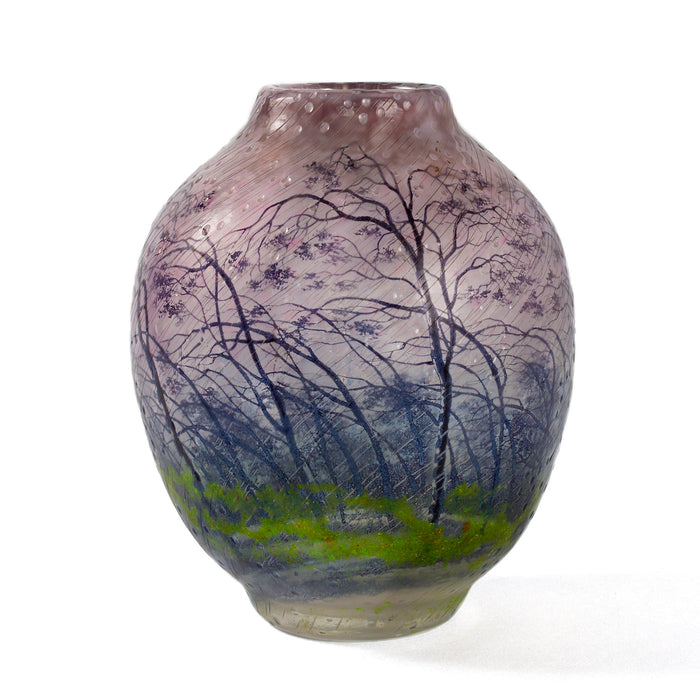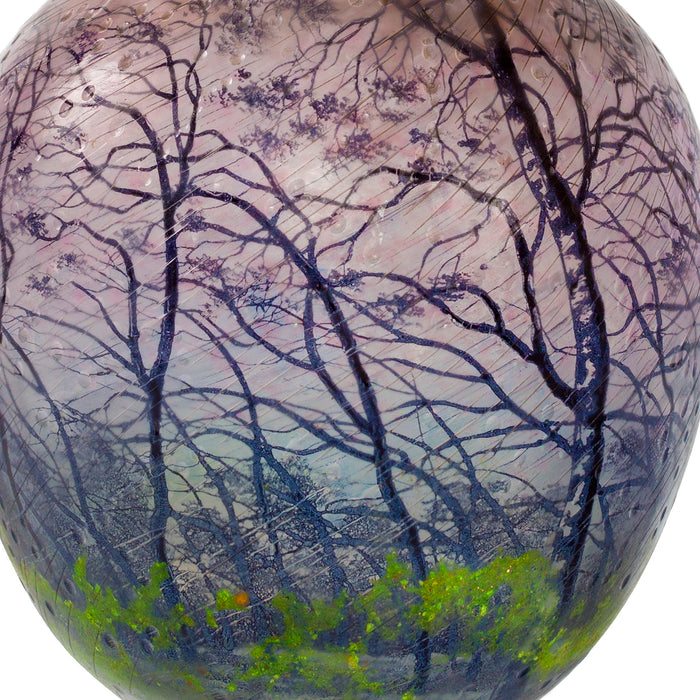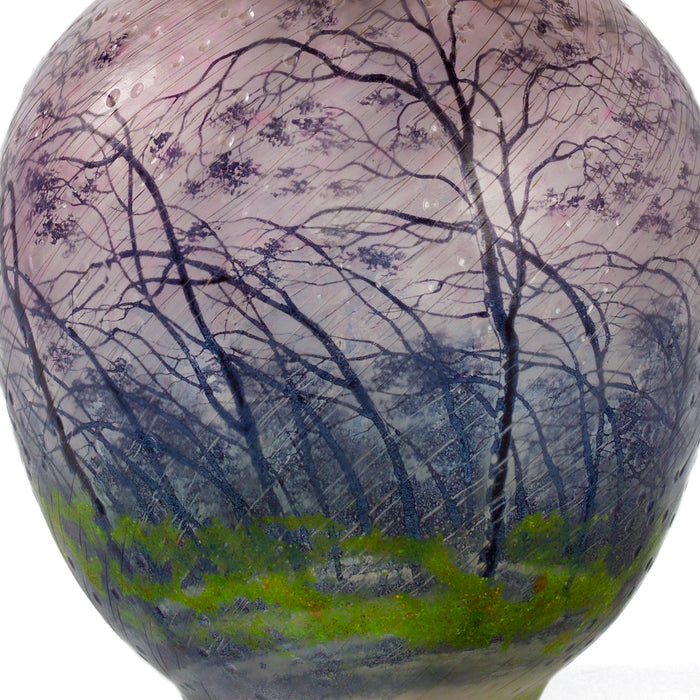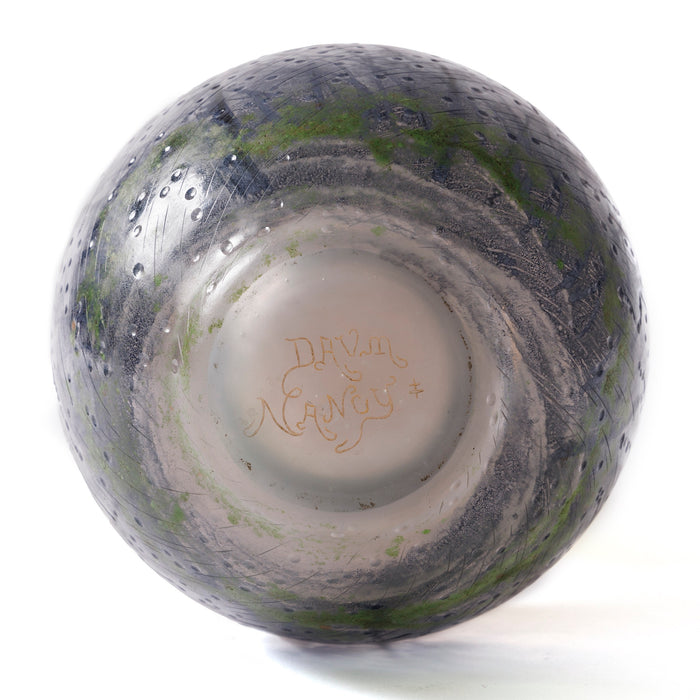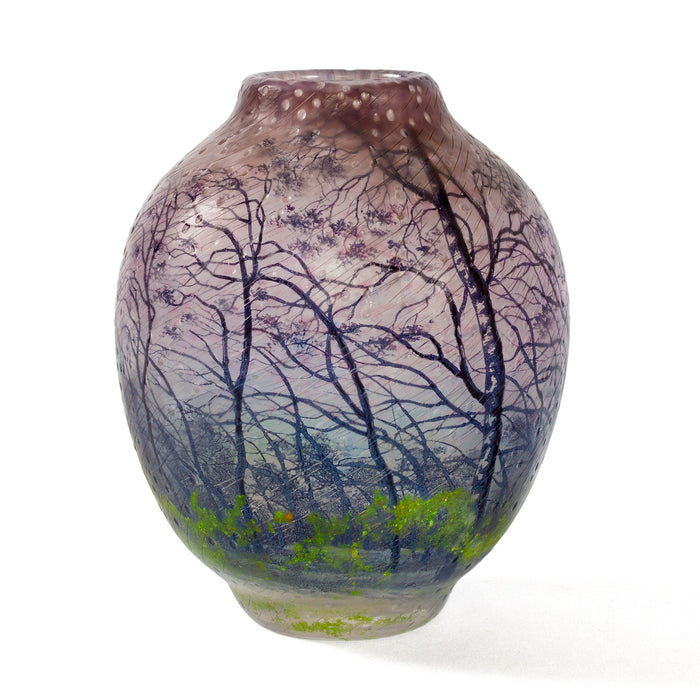
Daum Nancy "Trees and Wind in the Rain" Cameo Glass Vase
SOLD
$87,500
A French Art Nouveau "Trees in the rain" intercalaire cameo glass vase by Daum Nancy. The decoration with high heat can imprison a decor between layers of glass, also creating a blur in the representation that fits perfectly with the rainy atmosphere of the motif. The execution of such a piece is infinitely delicate. The trees whose silhouette is only visible, were first painted with enamel on a first layer of glass. Then the craftsman warmed the room to cover the decor with another layer of glass. The slight curtain of rain represented by fine discontinuous lines as well as the use of different shades of gray on certain branches and elements of greenery in the background also evoke certain Japanese prints of ukiyo-e. This Japanese artistic movement liked to depict scenes of rain or snow, "images of the floating world" (translation of ukiyo-e ) marked by the impermanence of all things. This trend had a significant influence on Art Nouveau and more particularly the Nancy School, founded in 1901 by Antonin Daum, Louis Majorelle, Emile Gallé, Victor Prouvé and Eugène Vallin.
- Product Details
- Curator's Notes
Item #: G-18826
Artist: Daum Nancy
Country: France
Circa: 1900
Dimensions: 6.25" high x 4.75" diameter
Materials: Cameo Glass
Signed: Daum Nancy", engraved in gold letters and Cross of Lorraine
Exhibition History: This rare and rare vase with intercalaire decoration is closer to copies with similar decorations preserved at the Museum of Fine Arts in Nancy, the Museum of Fine Arts in Strasbourg and the Museum of Decorative Arts in Paris.
Literature: Noël Daum, Daum master glassmakers, Lausanne, Éditions Edita Denoël, 1980, model of form and similar decoration reproduced p. 93.
The term Intercalaire translates from the French to mean "divider" and signifies the process of applying two layers of decoration to a piece of glass. The first layer is covered with a glass skin that ultimately provides the surface for the second layer of decoration. The technique was first developed by Eugène Kremer from Meisenthal (1890) in collaboration with Emile Gallé. The art of painting between layers of glass was first patented in
Berlin on February 21, 1896 and in Paris almost a year later on March 23, 1897. Shortly before 1900, the Daum brothers registered a similar kind of decoration that they called décoration intercalaire à grand feu (1899). Charles Schneider, who designed for Daum, had modified the technique to include the application of colored flecks and streaks of enamel paint between layers of glass Before applying the enamel paint onto a piece of glass, the glass had to be completely cooled down. After the enamel application, the glass was then repeatedly overlaid with additional layers and reheated. Because of their magical appearance, vases with intercalaire decoration immediately enjoyed huge success at the Paris World Fair of 1900. However, the steps of recurrent heating and cooling down of the glass required extremely delicate manufacturing procedures and the Daum brothers eventually stopped producing intercalaire vases around 1904.

